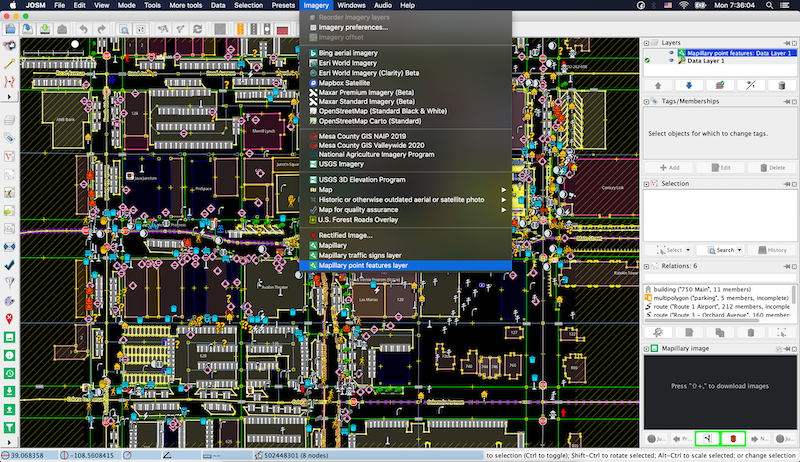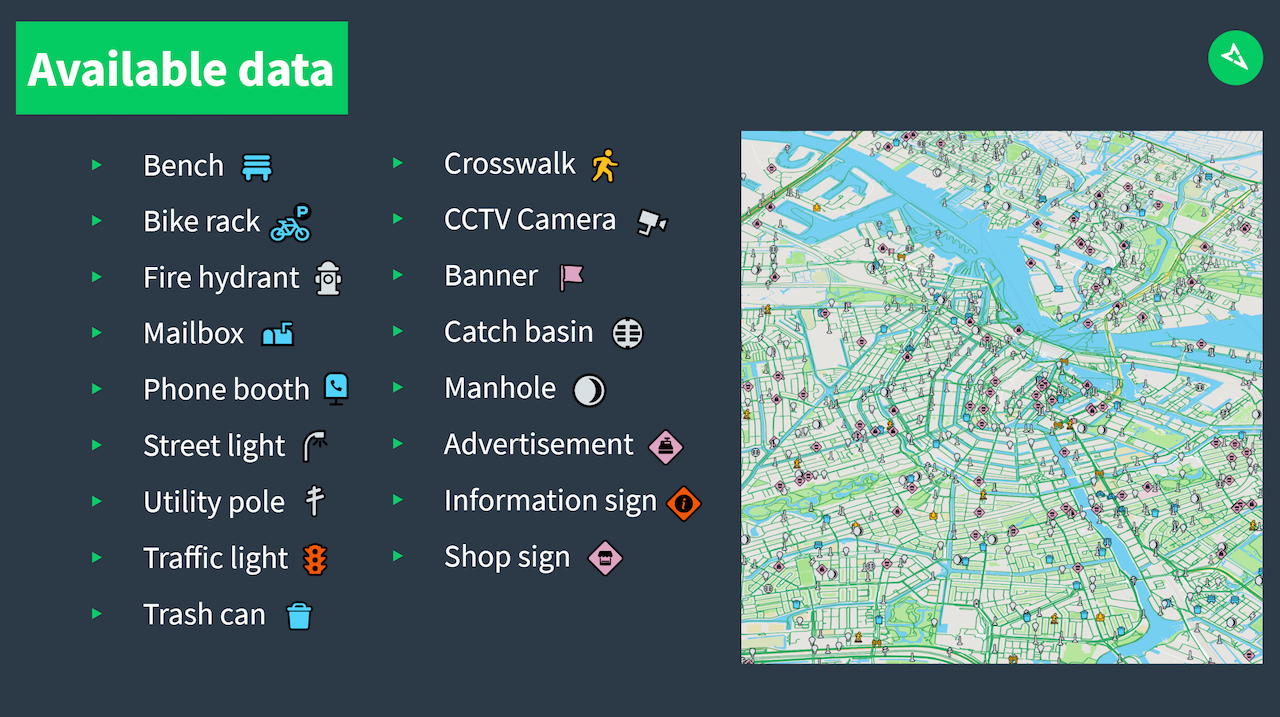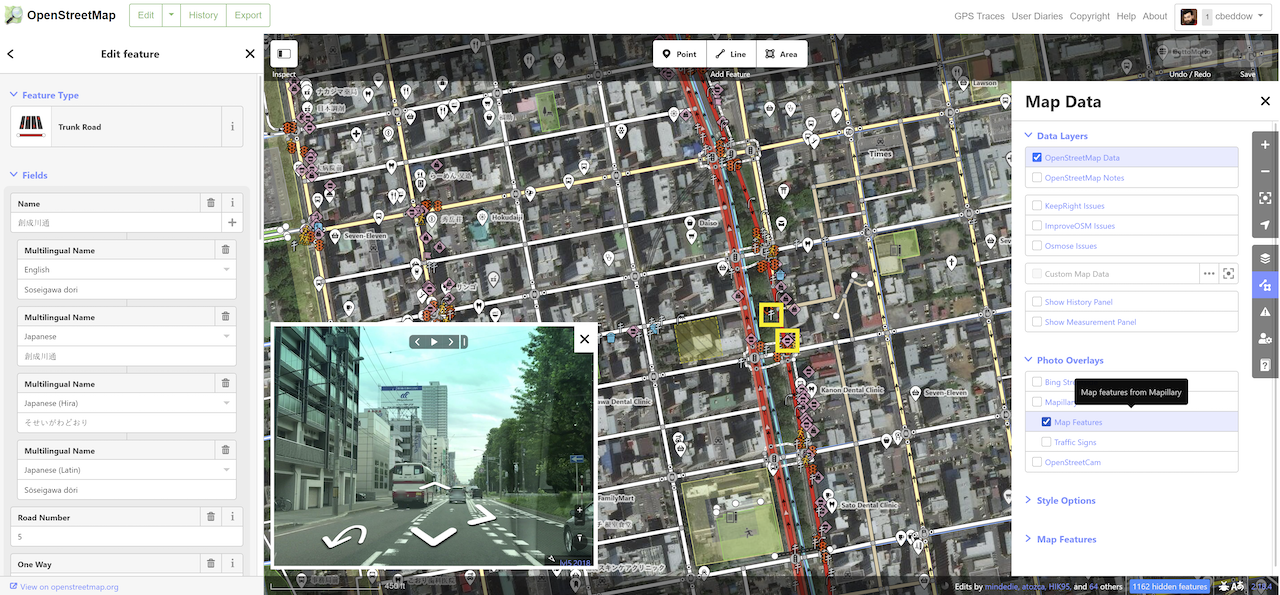Mapillary map features now available globally in OpenStreetMap
 Map features layer in JOSM.
Map features layer in JOSM.
All Mapillary map features are now available in OpenStreetMap (OSM) tools with recent upgrades to JOSM and iD editors, also reflected in the RapiD editor. Mappers can now access not only traffic signs, but other point data with a related OSM tag by activating the map features layer in the Mapillary section of either editor. In addition, Mapillary extracted geospatial data is available through the Mapillary API on a global scale at no charge, so developers can integrate these into their own custom tools by simply creating a client ID.
 List of Mapillary map features in OSM.
List of Mapillary map features in OSM.
Until recently, map features in OpenStreetMap iD editor were available by request only, while this data was never integrated in the Mapillary JOSM plugin until now. At Mapillary, we have been examining the more detailed relationships between Mapillary features, such as benches (object--bench) and utility poles (object--support--utility-pole) compared to their OSM tag equivalents. In some cases, many OSM tags match a single possible piece of Mapillary data, and it is up to the users to correctly and thoroughly tag the data when adding it into OSM.
 Map feature layer in iD Editor.
Map feature layer in iD Editor.
As always, the data provided is improved with the quality of the images, a strong GPS signal, and dedicated verification of the detections using verification projects. As contributors, you have the capability of producing detailed data that your community can help translate into OpenStreetMap. As always, Mapillary is an excellent tool for mappers everywhere, enabling local community to capture imagery and fix maps in a collaborative way.
If you have feedback and suggestions on better ways to equate Mapillary and OSM data, or believe more of the data available from the API can be useful in OSM despite not showing up in the OSM editors, don’t hesitate to contact our team.
/Chris
